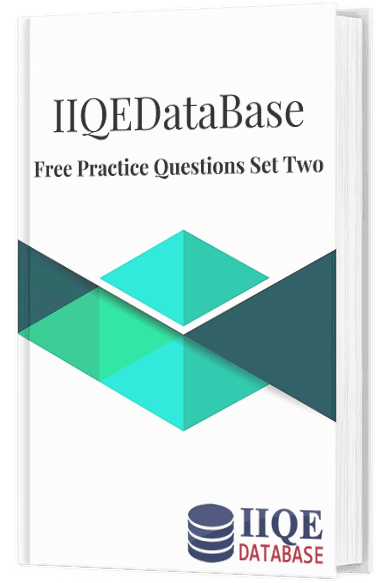- Dependents’ living expenses
- Final (end of life) expenses
- Educational funds
- Retirement income
- Mortgage repayment fund
- Emergencies fund
- Disability income
- Insurable Interest
- Utmost Good Faith
- Proximate Cause
- Indemnity
- Contribution
- Subrogation
Insurable interest is a relationship with the subject matter of insurance that is recognised at law or in equity as giving rise to a right to insure that person’s life.
- Insured Perils
- Excepted (or Excluded) Perils
- Uninsured Perils
- Interest
- Expenses
- Mortality
A material fact is defined as ‘every situation which would affect the judgment of a sensible insurer in securing the premium, or determining whether he will accept the risk’.
Proximate cause is concerned with the identification of the dominant. The effective cause of the loss is claimed under the insurance. The principal is likely to have less significance with life insurance partly because of the minimal use of exclusions.
Net premium is the money which is required to be collected from the policy-owners to meet death claims raised in the future under normal statistical expectations. The combination of interest and mortality produces net premium.
The owner of a participating policy receives a varying share of the divisible surplus of the insurer, usually on the policy anniversary dates. Such earnings are called policy dividends or dividends. Although no policy dividends are guaranteed, these policies are subject to higher premium rates than their Non-Participating counterparts.
Surrender value equals cash value minus surrender charge. Surrender charge is a type of fee that is bound when a policy is capitulated for its cash value or when a policy, is adjusted to provide a lower amount of death benefit.
- Payment on death only if it happens during a specified period
- Payment on death at any time
- Payment on a specified date or before death
The life insured dies during the specified period, or term
The policy is valid and effective at the time of death
Credit life insurance
Family income insurance
Mortgage redemption (or ‘mortgage protection’) insurance
The death benefit decreases annually, or at other specified times.
The level of annual premium generally remains the same throughout the policy term.
This is the cheapest form of life insurance available.
It is particularly suited for a temporary need which is reducing.
This type of insurance involves a level death benefit throughout the policy period.
In the event of death during the term, the face amount of the policy is paid.
The level of annual premium generally remains the same throughout the policy term.
Renewals may only be for the original face amount or smaller face amounts
The number of renewals allowed may be restricted
The premium rate for a renewable term policy is generally higher than that for a similar non-renewable term policy.
It is a policy whose value is directly connected to, or directly shows in, the fulfillment of the investments that have been bought with the premiums paid. The value of the units is directly linked to the value of the concealed assets of the fund or unit trust. The policy value naturally flickers according to the overall movements of those assets due to such high linkage.
An endowment plan pays the face amount when the subject matter survives a specified term but upon death, in case, he dies within the term. The policy is said to mature when the life insured survives the insurance period.
Pension is a plan that provides a monthly or other periodic income benefit to a retired person, until death. It may consist of an annuity.
The death benefit decreases each year.
The death benefit is only paid after a fixed number of years.
The death benefit may be paid on early death.
Under a Disability Waiver of Premium Rider, the insurer concurs to renounce his right to renewal premiums which are otherwise paid while the policy-owner insured is totally disabled.
Intentional self-inflicted injuries
Injuries sustained while engaging in criminal activities
Pre-existing conditions
Injuries resulting from war while the policy owner-insured is in military service
Intentional self-inflicted injuries
War-related injuries
Injuries whilst engaging in illegal activities
Aviation injuries
It means that when a policyowner-insured in a advised serious condition, all or part of the death benefit may be payable to him, although death has not yet occurred. Arrangements for this are provided in an accelerated death benefit rider (ADB rider), which is also known as a living benefit rider.
He is diagnosed with a specified disease
He is diagnosed with a terminal illness and has a life expectancy of 12 months or less
It is necessary for him to receive a specified medical procedure
Cancer
Illnesses related to the heart
Disability
Illnesses related to a major organ
Illnesses related to the nervous system
Illnesses related to the immune system
Generally there is a 90-day waiting period before LTC benefits are paid. Some insurers necessitate the policy to have been in force for one year or more before LTC benefits are paid.
The cover is only available up to a specified age
The cover is only available to standard risks
Payments may not be made for multiple/recurring events, may be subject to exceptions with a couple of diseases
The diagnosis has to be one done when the rider has been in effect for a specified number of days
Hospital charges
Private nursing
Surgeon’s, anaesthetist’s and operating theatre fees
In-patient physician’s fees
In-patient specialist’s fees
Out-patient follow-up care
Free worldwide assistance
Pre-existing conditions
Pregnancy and childbirth related expenses
Drug or other substance abuse, self-inflicted injury and STDs
AIDS or HIV related conditions
Congenital abnormalities treatment
This provision provides for regular increases in the disability income benefits which are paid to disabled policyowner-insured. The increases are connected to increases in a recognised independent index, e.g., Composite Consumer Price Index.
Cash surrender value (surrender value)
Reduced paid-up insurance
Extended term insurance
A lump-sum settlement
An interest option
A fixed period option
A fixed amount option
A life income option
Product pricing
Valuation
Claims and reinsurance
Management reporting
Product research: and development of new products.
Promotions/publicity
Advertising
Public relations: news conferences, media interviews, public talks and seminars, for example.
Market research: examining needs, demands and results
Product design
Provision of adequate and clear information
Suitability assessment
Advice to customers
Appropriate remuneration structure
Ongoing monitoring
Post-sale control
Personal particulars
Financial outgoings
Disposable assets
Liabilities
Family commitments
Sub-standard risks are also called special class risks. They are assumed to produce a higher mortality rate than a group of normal lives. They are insurable, but only subject to certain deliberations.
Certain medical disclosures on the application that need additional enquiry
The amount of insurance requested is high
The applicant is at a fairly advanced age
Correspondence
Documentation: duplicate policies, surrenders, plan conversion, etc.
Premium payments
Benefit administration: cash values, policy loans and dividends
Policy changes
Grace period is usually a minimum of 30 or 31 days
It does not apply to the initial premium for the policy
Payment of premium within the grace period is considered to be payment on time
Grace period is not a period of free insurance
Special conditions may arise with non-traditional types of policy
The assignment must not violate any vested right of any beneficiary
The assignment must not be for illegal purposes
It may be restricted to involve only a lump sum payment of policy benefit to the assignee
It is temporary in arrangement, usually where the policy is used as collateral security for a loan. The assignee’s interest is limited to the loan plus interests thereon. The assignor is provided a right of reversion once the loan is repaid in full.
Cash payment
Applied towards future premiums of the policy
Left with the insurer to earn interest
Used to buy paid-up additional insurance
Used to purchase one-year term insurance
Accounts department
Actuarial department
Agency training and control
Claims
Client service
Marketing
Underwriting
All material facts should be provided.
The applicant should complete the form personally.
Alterations and amendments should be avoided, if possible.
All questions should be answered, as fully as required.
It represents a contract, different from any subsequent insurance policy that may be issued
Cover starts from the date the application was signed and the date that the premium was paid
Cover is not conditional for the applicant eventually proving to be, or to have been, insurable
Cover is limited to a maximum specified number of days
Cover may terminate earlier than the final day of the period specified
Corporate culture: It should always be customer-orientated
Delegation
Systems: It should be created to monitor customer satisfaction
Training
Cooling-off period is a time frame provided to the policyholders during which they may contemplate and can change their mind about a life insurance policy that they have purchased or applied for if they wish.
Twisting is defined as the making of wrong or misleading statements or differentiation to persuade a policyholder to replace Existing Policy with other life insurance policy to the policyholder’s disadvantage.
Customer Protection Declaration (CPD) Form is a very important document which an insurance intermediary must help an applicant fulfilled before the applicant agrees or makes a decision in relation to the purchase of a New Policy.
The policyholder can engage in any beneficial experience of the pooled fund in the form of dividends.
The risk of return to the policyholder is lower than with investment-linked policies, owing to the said guarantees.
The policyholder have the full upside if the investment-linked policies perform well but also the full downside if they perform badly as such policies generally make no guarantees.
Term insurance policies
Refundable insurance policies providing hospital cash, medical, critical illness, or personal accident cover
Yearly renewable insurance policies for critical illness/medical cover
Group policies
Underwriting is defines as the evaluation of risks for the purposes of insuring them or deciding what insurance terms should apply. It can also be defined as it is determining the insurability of proposed risks.
Significantly overweight
Heavy smoker
Substance abuse (alcohol, drugs etc.)
Very dangerous occupation or leisure pursuits
Adverse inheritable family or personal medical history
Standard risks
Sub-standard risks
Declined risks
Preferred risks
Type of insurance cover
Address
Beneficiary
Amount of cover
Owner of the policy
Remind him of the maturity date
State the amount payable
List any requirements for payment
Enclose a relevant form of release
Report the insurance agent to the IARB or the insurance broker to the relevant broker body or the IA
Suspend the insurance agent from selling any further new life insurance
Claw back the commission paid on the case(s) in question
Write to the client



